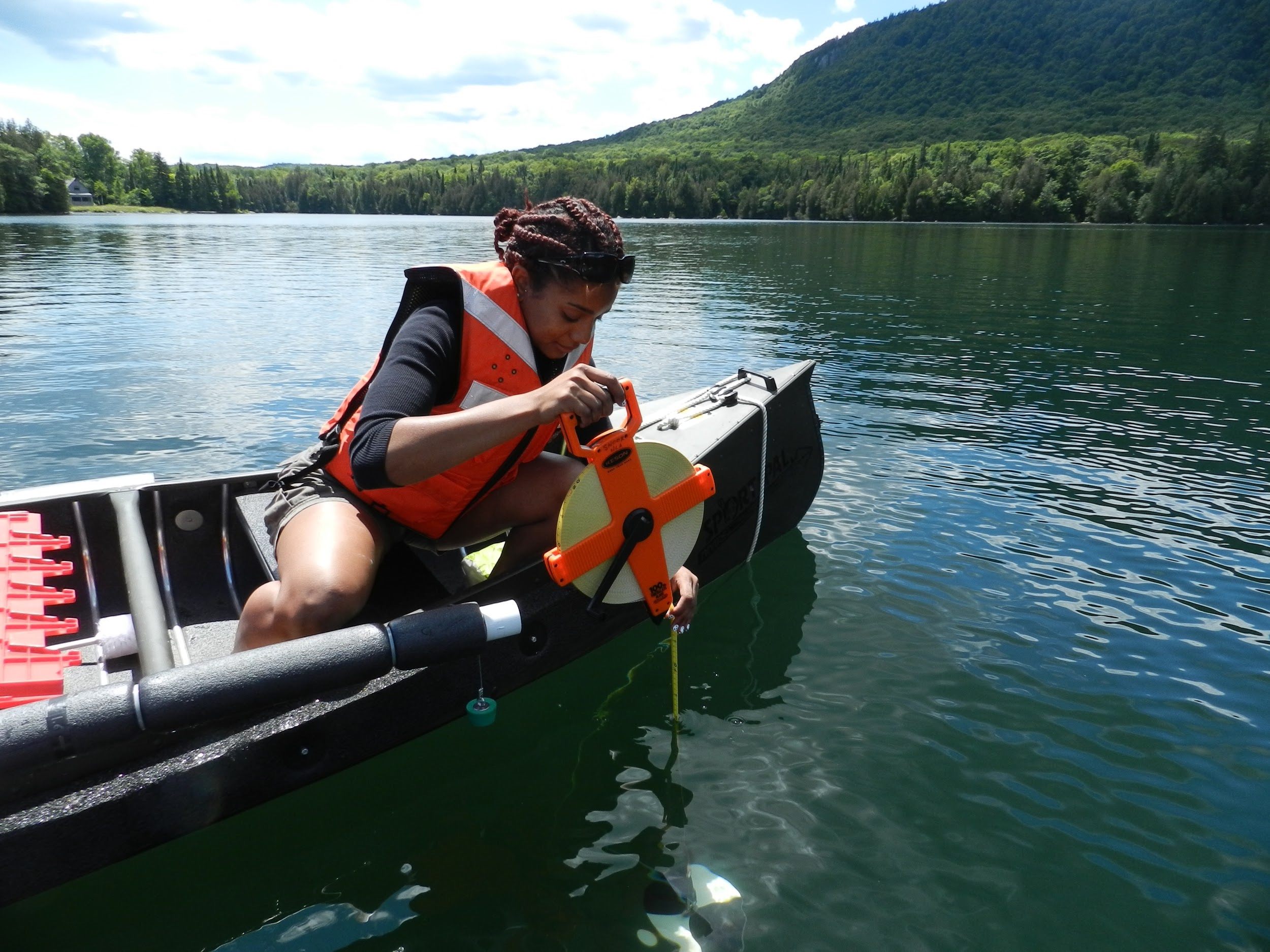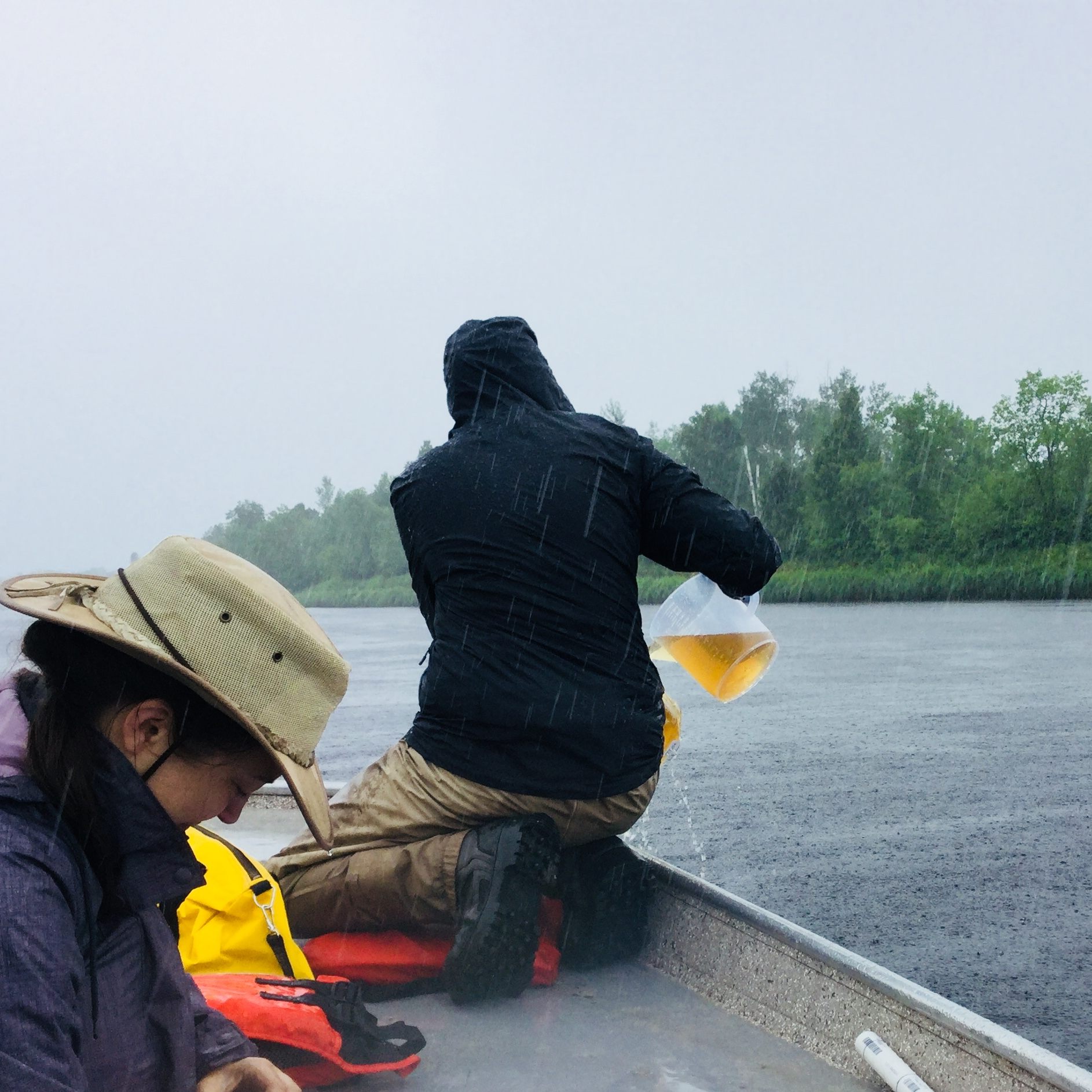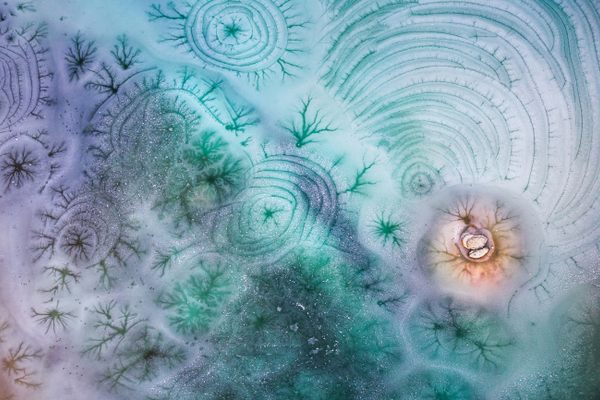The Murky Future of America’s Lakes
Where have all the blue lakes gone?

The children of the future may have to lean on different crayons. According to a recent paper in Limnology and Oceanography, over the past five years, America’s lakes have been steadily turning from “blue” to greenish-brown, a state officially known as “murky.” The study, which is based off data from the EPA’s National Lakes Assessment, found that between 2007 and 2012, the proportion of blue lakes in a representative set plummeted from 46 percent to 28 percent. At the same time, the percentage of murky lakes rose from 24 percent to 35.4 percent.
“I grew up on a lake,” says Dina Leech, the study’s lead author and a professor at Longwood University in Virginia. “The first thing that you notice about a body of water is its color.” It’s not just aesthetic: Compositionally, each hue means something specific. Green lakes are full of nutrients, which encourage the growth of algae. Brown lakes are steeped with organic matter, such as dirt and dead plants. Blue lakes are clear because they don’t have much of either of these things. And murky lakes—“which are sort of greenish brown or brownish green, depending on your worldview,” Leech says—have a lot of both.

During the NLA, which happens every five years, volunteers head out to over a thousand lakes across the United States and gather information about them, including size, depth, and water temperature. This new study focused on two parameters: amount of phosphorus, and “true color.”
To get a true color measurement, volunteers take samples, filter out particulate, and visually compare the filtered water to a color wheel. Taken together, this “nutrient-color paradigm” allows experts to divide lakes into the four categories in question.
Besides “murky”—which tends to indicate poor water quality—none of these colors are inherently troublesome. Brown lakes, for example, are common near wetlands, which provide lots of organic matter. But a lake high up in the mountains will probably be clear and blue, because there’s not a lot of runoff to absorb. “Lakes could naturally exist in any one of these states,” says Leech. “What we’re concerned about is over five years—this short period of time—we see lakes shifting to murky.”

No one is quite sure why this murkification is occurring. Climate change, which can increase temperature and precipitation, is one possibility. Another is the success of the Clean Air Act, which has reduced acid rain, and therefore soil acidity. (More basic soil “holds less tightly” to organic matter, and is more likely to let it run off into lakes, Leech explains.)
Land use may be another factor: When the authors cross-referenced their lake color data set with one indicating land use, they found that “green lakes and murky lakes tend to have more agriculture in their watersheds”—the areas from which they receive runoff—says Leech.
“We can’t say definitively that agriculture is what caused those lakes to be green or murky, but it’s a place to start,” she says. The researchers plan to dive into other public data sets in the future, to see if they can find more correlations. In the meantime, if you want to cool off in blue water, you might want to make haste.


















Follow us on Twitter to get the latest on the world's hidden wonders.
Like us on Facebook to get the latest on the world's hidden wonders.
Follow us on Twitter Like us on Facebook